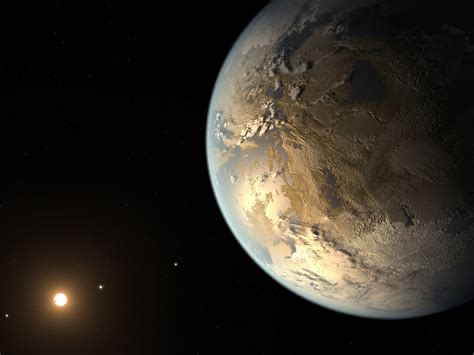
Astronomers Discover the Most Earth-Like Planet Yet—Could It Be Our Next Home?
The search for a second Earth is one of humanity’s most exciting and ambitious endeavors. For decades, astronomers have combed the stars, hoping to find a planet that bears the potential to support life as we know it. With recent discoveries, that dream is becoming more tangible than ever. In a groundbreaking revelation, astronomers have identified the most Earth-like planet discovered so far—an exoplanet that may very well hold the key to our future beyond Earth. But with this discovery comes a deeper question: could this planet truly be our next home?
The Discovery of Kepler-452b
The planet in question is Kepler-452b, located roughly 1,400 light-years from Earth in the constellation Cygnus. It was discovered by NASA’s Kepler Space Telescope, which has been instrumental in identifying thousands of exoplanets since its launch in 2009. Kepler-452b has captured the imaginations of scientists and laypeople alike because of its striking resemblance to Earth.
Kepler-452b is often referred to as “Earth’s cousin” because of its many similarities to our planet. It orbits its star, Kepler-452, within the “habitable zone”—the region where conditions might allow liquid water to exist on its surface. This is one of the most critical factors when considering the potential for life on an exoplanet, as water is essential for life as we know it. The star, Kepler-452, is similar to our Sun, a G-type main-sequence star, and is about 6 billion years old, which is only slightly older than the Sun’s 4.5 billion years. This makes Kepler-452b a compelling candidate in the search for habitable planets.
A Super-Earth
Kepler-452b is classified as a “Super-Earth” due to its size—about 60% larger than Earth. Its mass and gravity are likely higher, which suggests that its surface could support a thicker atmosphere. While it may be more massive than Earth, it shares many of the same characteristics, making it one of the most promising planets discovered so far.
The planet’s orbital period around its star is also strikingly similar to Earth’s: Kepler-452b takes about 385 days to complete one orbit, just slightly longer than our own 365-day year. This makes the conditions on the planet remarkably familiar, as it’s in the same sweet spot that allows life to flourish on Earth. It’s not too close to its star to make it unbearably hot, nor too far to make it too cold for liquid water.
Could Kepler-452b Support Life?
While the discovery of Kepler-452b is thrilling, it’s important to understand that its potential for supporting life is still speculative. We do not yet have direct evidence that Kepler-452b has water or an atmosphere capable of supporting life. However, its location in the habitable zone is promising. Scientists speculate that if the planet has a similar atmosphere to Earth, it could contain the necessary conditions for life, including a stable climate and the presence of liquid water.
One of the intriguing possibilities about Kepler-452b is that it could have a thick, Earth-like atmosphere that shields it from harmful radiation and helps maintain a stable temperature. If it does indeed have an atmosphere, it might be capable of sustaining microbial life, or even more complex organisms, depending on its composition. However, until we can send spacecraft or telescopes to study the planet in more detail, all of this remains conjecture.
The Challenges of Reaching Kepler-452b
Even though Kepler-452b seems like a promising candidate for life, it is, at present, too far away to be a practical destination for humanity. At 1,400 light-years away, it is well beyond the reach of current space travel technology. With our fastest spacecraft, it would take thousands of years to reach Kepler-452b. So, while it may hold the potential to be our next home, it’s far from feasible in the near future.
Nonetheless, the discovery of planets like Kepler-452b is important because it provides us with an understanding of where to look and what to look for when searching for habitable worlds. The more we learn about planets like Kepler-452b, the more we can refine our search for Earth-like worlds, whether near or far.
The Role of Kepler-452b in the Search for Habitable Planets
The discovery of Kepler-452b is a significant milestone in humanity’s search for other habitable planets. It has helped to identify that planets similar to Earth are not only possible but may be more common than we previously thought. Kepler-452b is part of a growing list of “Earth-like” planets that are being identified by telescopes such as Kepler and, more recently, the James Webb Space Telescope.
In addition to the scientific implications, the discovery of Kepler-452b has broader societal and philosophical significance. The idea that there are planets out there that are capable of supporting life raises profound questions about our place in the universe. If life exists elsewhere, it would fundamentally alter our understanding of biology, evolution, and the uniqueness of our own planet.
Moreover, the discovery fuels the imagination of those who dream of humanity expanding beyond Earth. The possibility of life on another planet has long been a source of fascination in science fiction, and now, with discoveries like Kepler-452b, it seems that we may not be as far from this reality as we once thought.
The Future of Exoplanet Exploration
The study of exoplanets is still in its early stages, and Kepler-452b is just one of many planets that could hold the key to understanding the universe and our place in it. As technology improves, future telescopes and space missions will be able to study planets like Kepler-452b in greater detail, potentially revealing even more Earth-like worlds. In fact, the upcoming James Webb Space Telescope promises to deliver even more detailed observations of distant exoplanets, including their atmospheres, which could offer direct evidence of their potential for habitability.
As scientists continue to refine their methods and instruments, it’s likely that more Earth-like planets will be discovered, some of which may be even closer to us than Kepler-452b. These findings could shape the future of space exploration, opening new doors to possibilities that were once confined to the realm of science fiction.
Conclusion
Kepler-452b’s discovery represents a giant leap in the search for habitable exoplanets. While we’re still far from being able to visit or colonize this distant world, the planet provides hope that life beyond Earth may one day be found. Its similarities to our own planet raise intriguing questions about the existence of other Earth-like worlds, and its discovery is a testament to the power of modern astronomy and space exploration.
In the coming years, as technology improves and more planets are discovered, humanity may come closer to finding its next home in the stars. Until then, Kepler-452b remains a symbol of possibility, reminding us that the universe is vast, mysterious, and full of potential.

Be the first to comment